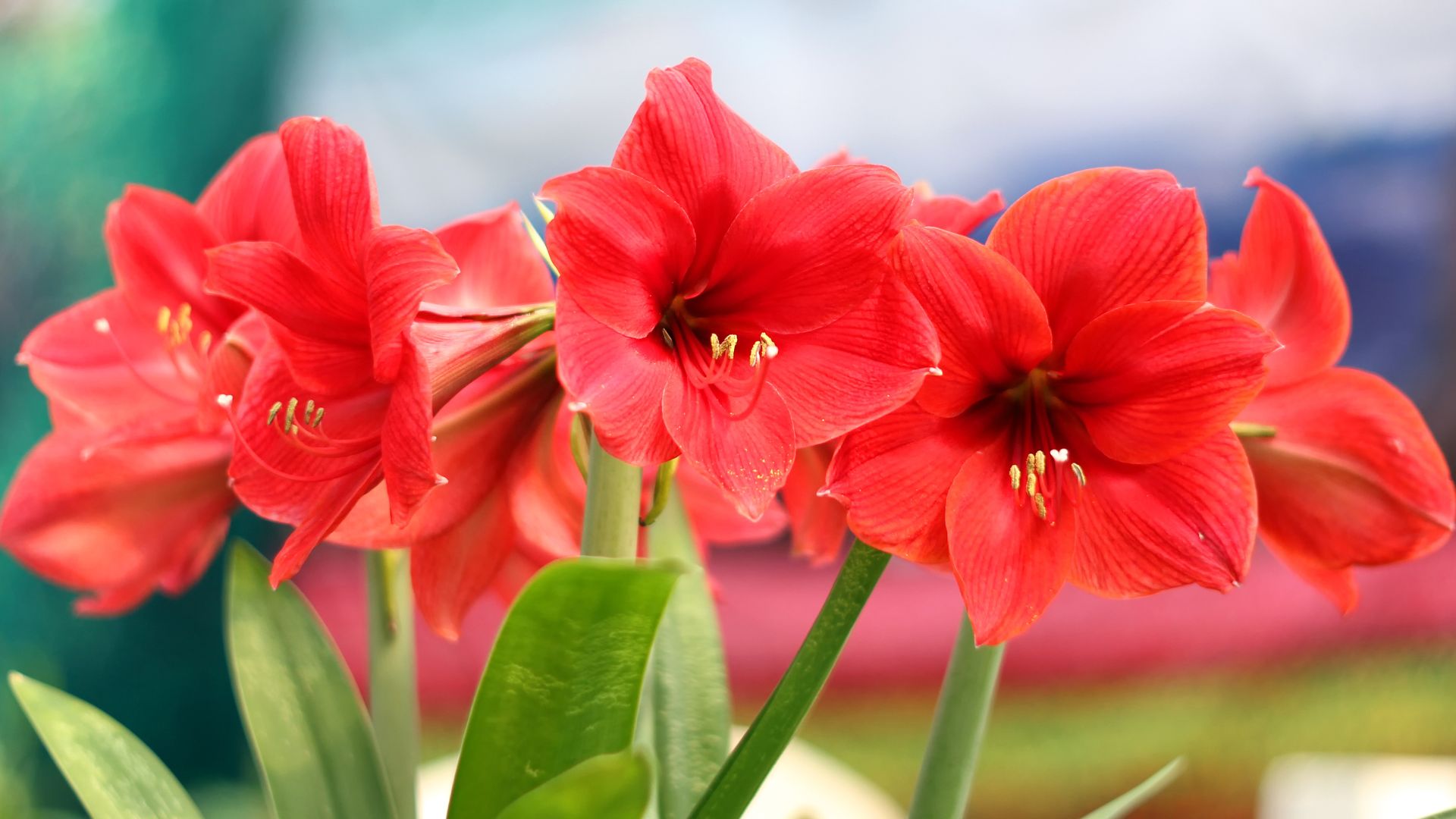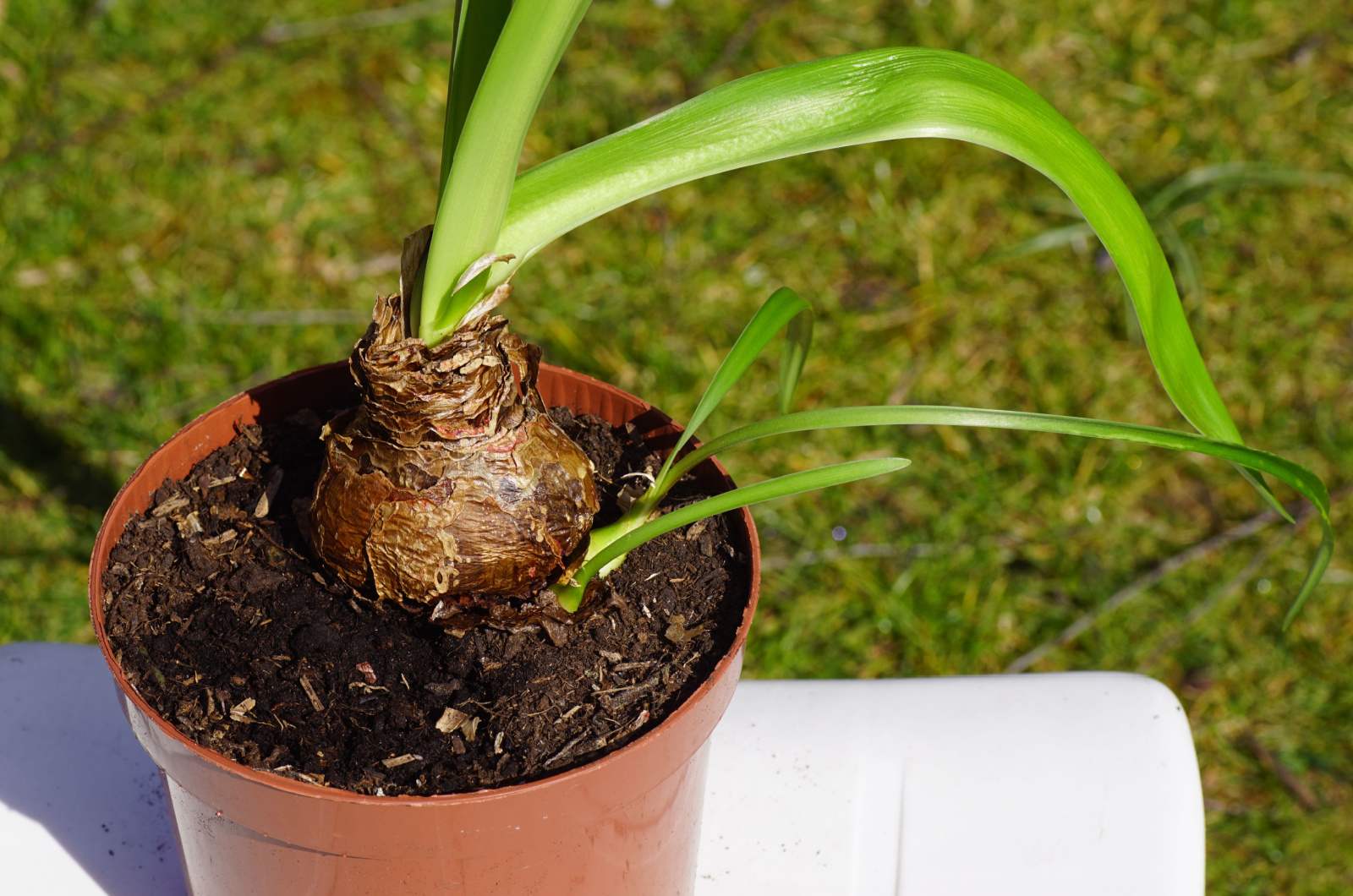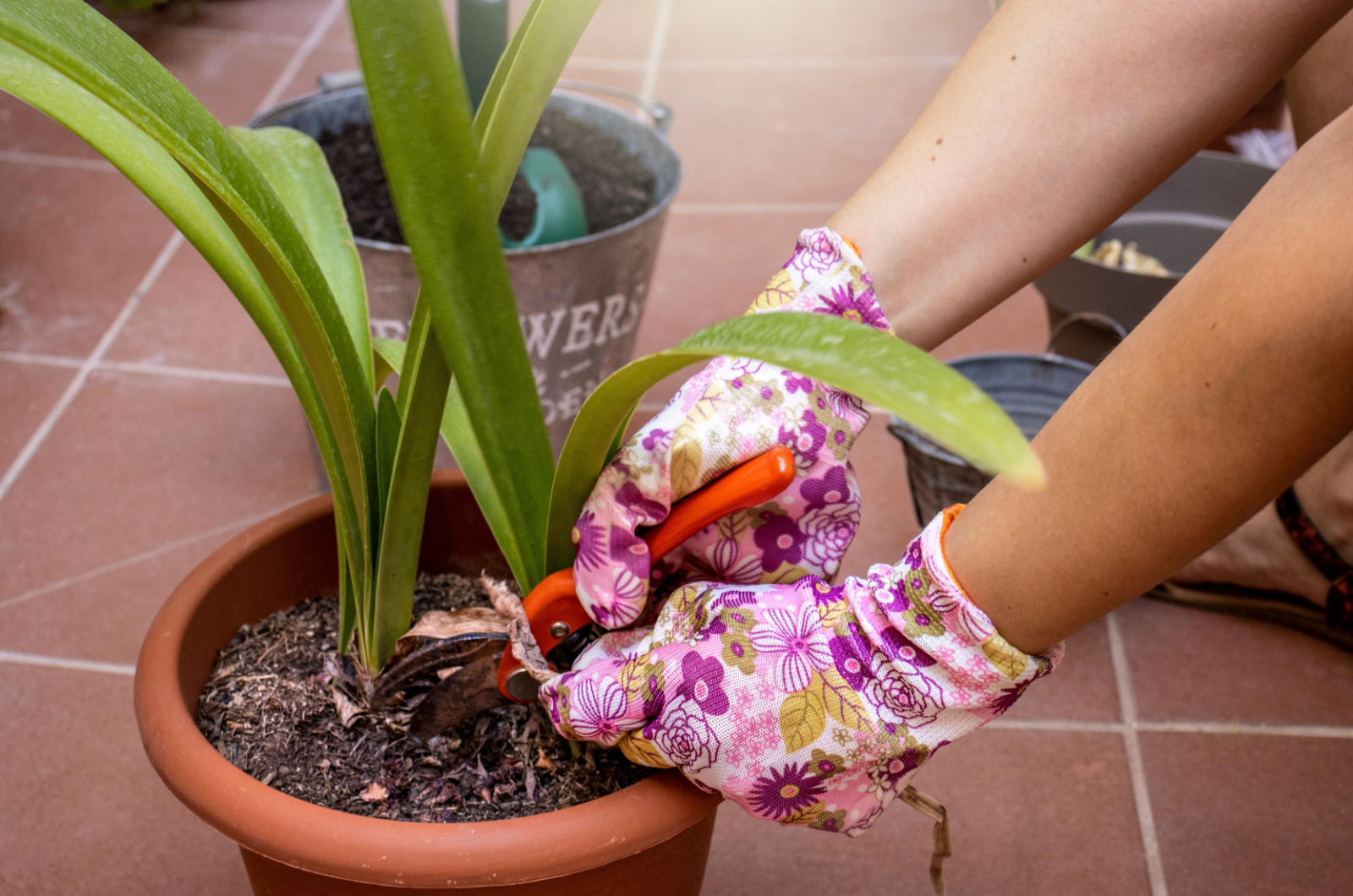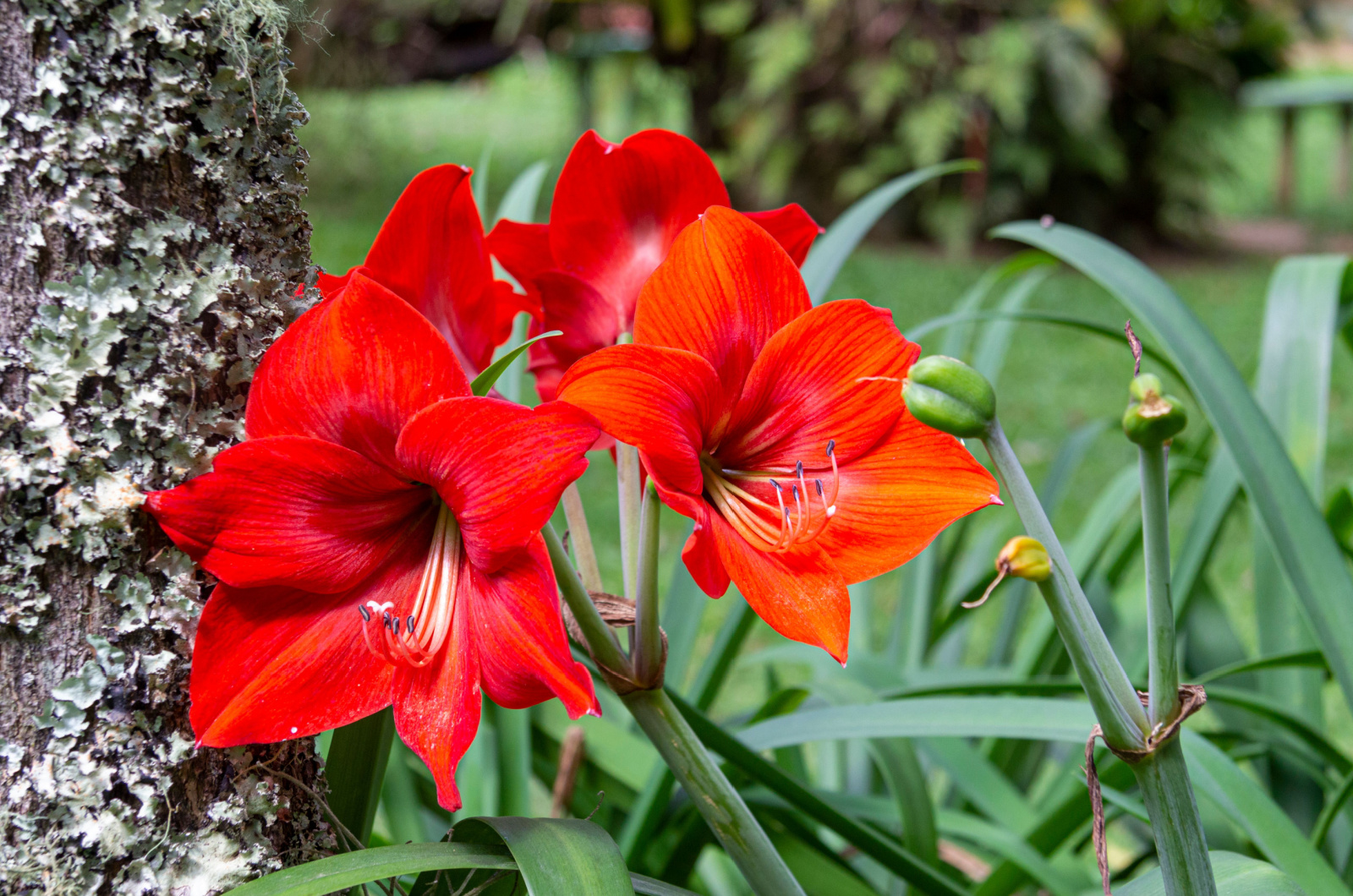If you live in warmer climates and are looking for a beautiful fall-flowering bulb, then Amaryllis is the perfect choice for you!
Amaryllis flowers are known for their stunning beauty, and you can grow them yourself with a few simple steps. Their funnel-shaped flowers grow on tall stems and range in color from pale pink and magenta to pure white.
These flowers combine ideally with the large, strap-like leaves, making your garden or indoor space more vibrant and lively. Besides their aesthetics, these fall-flowering bulbs are also known for their relatively easy plant care.
In this article, we are going to share some tips on how to grow Amaryllis, and also how to trigger blooming.
Stay tuned!
Amaryllis Plant Care
There’s really not that much fuss with Amaryllis plant care. Simple well-draining soil and some watering and sun will keep these bulbs happy and healthy.
Nonetheless, we will go into more detail and try to figure out how to make the best growing conditions for this unusual plant!
Soil Requirements
Well-draining soil is a must for this pink perennial flower. Use a mix of potting soil, perlite, and sand for potted plants, or make sure that your garden soil has good drainage. The pH levels of the soil should be between 6.0 to 6.8.
I would suggest you add some well-decomposed compost to make the soil more fertile. If you need more information about adding compost to the soil, check out this article: Figure Out The Ideal Amount Of Compost You Should Add To The Soil
Water Requirements
These types of plants prefer slightly moist but not waterlogged soil. Wait until the top 2 inches of the soil is dry and then water thoroughly, allowing excess water to drain away. Potted plants should be grown in pots with drainage holes in the bottom.
You should avoid getting the top of the bulbs wet. Also reduce watering when the plant is not actively growing.
Fertilizer Requirements
Apply a controlled-release organic fertilizer made specifically for flowering plants. Do so in the fall, right after flowering and before the leaves have started growing. You can also add diluted fertilizer every 2 to 4 weeks during the growing season.
Also read: The Best Time To Plant Amaryllis Bulbs Indoors For Christmas Flowering
Light Requirements
Amaryllis grow best in bright, direct sunlight. However, these bulbs can also grow just fine in partial sun. So, when planting Amaryllis, choose a sunny spot with well-draining soil.
If you are growing them indoors, put them near a sunny window. As the flower stalks begin to emerge, more direct sunlight can be beneficial.
Pruning
If you want to preserve bulbs for the next season, then you should remove flower heads and stems right after blooming. Get rid of dead or damaged leaves in the late spring.
You can use cut flower stems for flower arrangements or as a decoration indoors.
Propagation
Amaryllis can be propagated by dividing in late spring or early summer, right after the leaves have completely died. Wait until the plant has been growing for several years, then carefully separate the smaller bulbs from the larger ones – just make sure that the roots are attached.
Replant them, and they should grow into new plants in no time!
Pests & Diseases
Although Amaryllis is not susceptible to pests and diseases, there are still some pesky critters that can damage this wonderful flowering plant.
For instance, snails and slugs like munching on those large leaves – these can be treated with iron chelate-based snail pellets, or you can find another helpful way to get rid of snails.
Less common pests are aphids, mealybugs, and spider and bulb mites, but that doesn’t mean that you shouldn’t be on the lookout for them!
If you notice any signs of pest infestation, treat them with neem oil or insecticidal soil.
Bulb rot can also occur if the soil is too wet, but this issue can be easily prevented by ensuring good drainage. Proper air circulation and adequate watering can prevent fungal diseases like red blotch. Treat fungal diseases with neem oil or copper-based fungicide.
How To Trigger Blooming
Amaryllis is an indoor plant that can flower all year, that is, if you learn how to trigger blooming during the winter season!
These plants usually bloom from March to June, but there are a few tricks you can employ to trigger blooming during the winter season. So, what you should do is let Amaryllis bulbs go dormant for about 10 to 12 weeks.
They must rest before entering the flowering stage again, and you must stop watering and fertilizing them during this time. All you have to do is put them in dry, dark, and cool places (such as the basement or garage).
The ideal temperature for this period is between 50 to 60 degrees Fahrenheit. Wait until the leaves are dry and brown to cut your plant entirely, but leave the top one or two inches of the bulb.
Once you’ve done all that, you can simply forget all about your Amaryllis.
After a certain amount of time has passed, it’s time to wake your sleeping beauty from its resting stage. Simply remove your Amaryllis from its dark place and put it in fresh potting soil. Then, place the bulb back in a sunny location with temperatures between 60 and 65 degrees.
Make sure to give your Amaryllis plenty of water and wait for the new leaves to appear. Start with the regular watering and fertilizing schedule and provide consistent moisture (but don’t overdo it!).
New flowers should appear soon enough, bringing life and joy into your living space.
Also read: 10 Best Spring Bulbs To Plant In Fall




